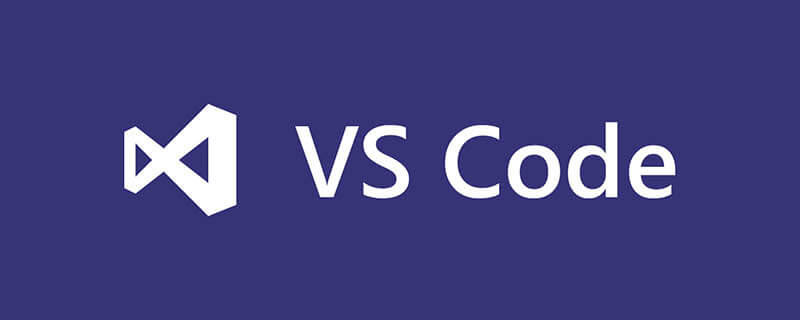NULL plays an important role in C functions. It is essentially a null pointer constant that does not point to any valid memory address. Using NULL in function parameters means that no valid data is passed, while in function return value means that the function execution failed or the desired result is not found. Careful when using NULL, always check NULL, initialize the pointer to NULL, and use assertions to check if the pointer is NULL to avoid potential pitfalls, thus navigating NULL gracefully.

Function dance steps of NULL in C language: Elegance and traps
You may have seen NULL in countless codes, but do you really understand the subtlety and potential dangers of it in functions? In this article, we do not play with virtual things, but directly penetrate into the core of C language to unveil the mystery of NULL . After reading, you will be able to navigate NULL gracefully like a sophisticated dancer, avoiding those lurking traps.
The essence of NULL: the incarnation of the null pointer
NULL , essentially a null pointer constant, means that it does not point to any valid memory address. It is like an empty space on the stage, waiting for the actors (data) to appear. Understanding this is crucial because it determines the various ways NULL is applied in functions. It's not a magical magic, but a simple identifier that tells the compiler: "There's nothing here".
NULL in function parameters: pass empty information
Using NULL in function parameters usually means that no valid data is passed. Imagine that a function requires a pointer to a string as an argument. If we don't want to pass any string, we can pass NULL and tell the function: "I won't give you any string this time".
<code class="c">#include <stdio.h> #include <stdlib.h> void printString(const char *str) { if (str == NULL) { printf("No string provided.\n"); return; } printf("The string is: %s\n", str); } int main() { char *myString = "Hello, world!"; printString(myString); // 传递一个有效的字符串printString(NULL); // 传递NULL,表示没有字符串return 0; }</stdlib.h></stdio.h></code>
In this code, printString function gracefully handles the NULL parameter, avoiding potential segfaults. This is a common and very important way to deal with errors.
NULL in function return value: signal light
NULL is the return value of the function, which usually means that the function fails to execute or the desired result is not found. It is like a signal light that tells the caller: "I have a problem here." For example, a dynamic memory allocation function returns NULL if memory allocation fails.
<code class="c">#include <stdio.h> #include <stdlib.h> char *allocateString(size_t size) { char *ptr = (char *)malloc(size); if (ptr == NULL) { fprintf(stderr, "Memory allocation failed!\n"); return NULL; // 返回NULL表示内存分配失败} return ptr; } int main() { char *str = allocateString(100); if (str == NULL) { return 1; // 指示错误} // 使用str ... free(str); return 0; }</stdlib.h></stdio.h></code>
In this code, allocateString function returns NULL when memory allocation fails. The caller must check the return value to avoid using invalid pointers. This reflects the importance of robust programming.
The trap of NULL pointer: Step by step
Using NULL seems simple, but if you are not careful, you will fall into a trap. The most common trap is dereferences to NULL pointers, which can cause the program to crash. Remember, NULL means "empty" and you can't try to access what it points to. The compiler won't prevent you from dereferenced NULL , but the runtime system will punish you without mercy.
Best Practice: Be cautious
- Always check
NULL: When using the return value of any function that may returnNULL, be sure to check if the return value isNULL. - Initialize pointer to
NULL: When declaring a pointer variable, it is best to initialize it toNULLto avoid pointing to an unknown memory address. - Use assertions: During the debug phase, you can use assertions to check if the pointer is
NULL, which helps to detect problems as early as possible.
In short, NULL plays an important role in C functions. It is not only an effective tool for passing null information and indicating failure of functions, but also a potential source of danger. Only by understanding its essence, mastering its usage, and always being cautious can you dance gracefully in the programming world of C language. Remember, programming is an elegant dance, and proficient use of NULL will make you a true dancer.
The above is the detailed content of How to use NULL in functions in C language. For more information, please follow other related articles on the PHP Chinese website!
 (超详细)VScode中配置C语言环境的方法Dec 05, 2022 pm 07:05 PM
(超详细)VScode中配置C语言环境的方法Dec 05, 2022 pm 07:05 PMVScode中怎么配置C语言环境?下面本篇文章给大家介绍一下VScode配置C语言环境的方法(超详细),希望对大家有所帮助!
 c语言中node是什么意思Jul 06, 2022 pm 03:51 PM
c语言中node是什么意思Jul 06, 2022 pm 03:51 PM在C语言中,node是用于定义链表结点的名称,通常在数据结构中用作结点的类型名,语法为“struct Node{...};”;结构和类在定义出名称以后,直接用该名称就可以定义对象,C语言中还存在“Node * a”和“Node* &a”。
 c语言怎么将数字转换成字符串Jan 04, 2023 pm 03:20 PM
c语言怎么将数字转换成字符串Jan 04, 2023 pm 03:20 PMc语言将数字转换成字符串的方法:1、ascii码操作,在原数字的基础上加“0x30”,语法“数字+0x30”,会存储数字对应的字符ascii码;2、使用itoa(),可以把整型数转换成字符串,语法“itoa(number1,string,数字);”;3、使用sprintf(),可以能够根据指定的需求,格式化内容,存储至指针指向的字符串。
 c语言开根号运算符是什么Mar 06, 2023 pm 02:39 PM
c语言开根号运算符是什么Mar 06, 2023 pm 02:39 PM在c语言中,没有开根号运算符,开根号使用的是内置函数“sqrt()”,使用语法“sqrt(数值x)”;例如“sqrt(4)”,就是对4进行平方根运算,结果为2。sqrt()是c语言内置的开根号运算函数,其运算结果是函数变量的算术平方根;该函数既不能运算负数值,也不能输出虚数结果。
 c语言数组如何初始化Jan 04, 2023 pm 03:36 PM
c语言数组如何初始化Jan 04, 2023 pm 03:36 PMC语言数组初始化的三种方式:1、在定义时直接赋值,语法“数据类型 arrayName[index] = {值};”;2、利用for循环初始化,语法“for (int i=0;i<3;i++) {arr[i] = i;}”;3、使用memset()函数初始化,语法“memset(arr, 0, sizeof(int) * 3)”。
 c语言合法标识符的要求是什么Aug 27, 2020 pm 01:47 PM
c语言合法标识符的要求是什么Aug 27, 2020 pm 01:47 PMc语言合法标识符的要求是:1、标识符只能由字母(A~Z, a~z)、数字(0~9)和下划线(_)组成;2、第一个字符必须是字母或下划线,不能是数字;3、标识符中的大小写字母是有区别的,代表不同含义;4、标识符不能是关键字。
 c语言中源文件编译后生成什么文件Nov 23, 2022 pm 07:44 PM
c语言中源文件编译后生成什么文件Nov 23, 2022 pm 07:44 PMc语言编译后生成“.OBJ”的二进制文件(目标文件)。在C语言中,源程序(.c文件)经过编译程序编译之后,会生成一个后缀为“.OBJ”的二进制文件(称为目标文件);最后还要由称为“连接程序”(Link)的软件,把此“.OBJ”文件与c语言提供的各种库函数连接在一起,生成一个后缀“.EXE”的可执行文件。
 c语言可以处理的文件类型是什么Sep 19, 2022 pm 03:53 PM
c语言可以处理的文件类型是什么Sep 19, 2022 pm 03:53 PMc语言可以处理的文件类型是:文本文件和二进制文件。C语言所能够处理文件是按照存放形式分为文本文件和二进制文件:1、文本文件存储的是一个ASCII码,文件的内容可以直接进行输入输出;2、二进制文件直接将字符存储,不能将二进制文件的内容直接输出到屏幕上。


Hot AI Tools

Undresser.AI Undress
AI-powered app for creating realistic nude photos

AI Clothes Remover
Online AI tool for removing clothes from photos.

Undress AI Tool
Undress images for free

Clothoff.io
AI clothes remover

AI Hentai Generator
Generate AI Hentai for free.

Hot Article

Hot Tools

Dreamweaver CS6
Visual web development tools

Notepad++7.3.1
Easy-to-use and free code editor

Safe Exam Browser
Safe Exam Browser is a secure browser environment for taking online exams securely. This software turns any computer into a secure workstation. It controls access to any utility and prevents students from using unauthorized resources.

SublimeText3 English version
Recommended: Win version, supports code prompts!

ZendStudio 13.5.1 Mac
Powerful PHP integrated development environment






